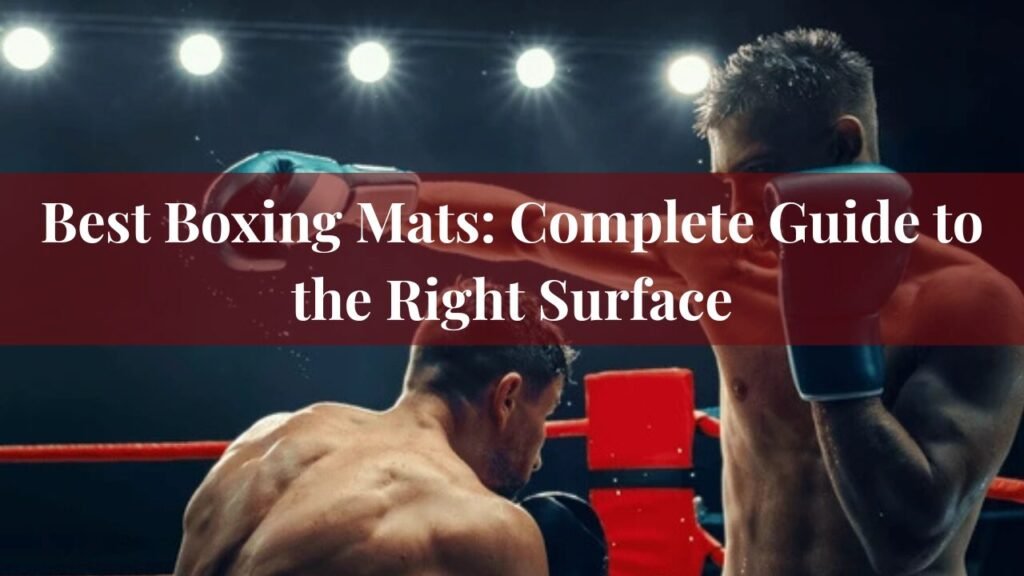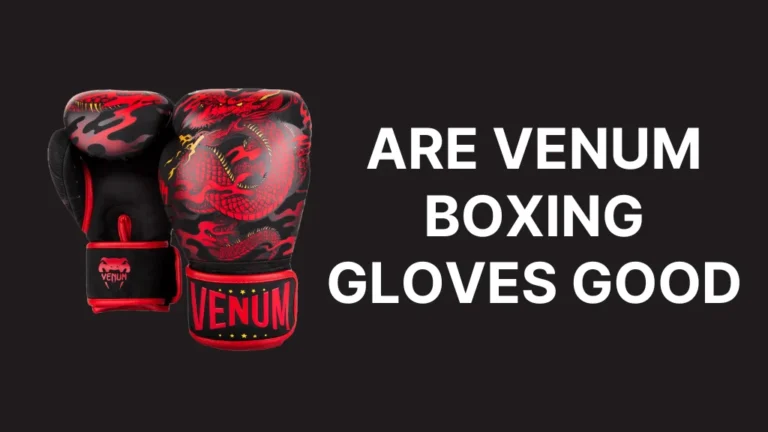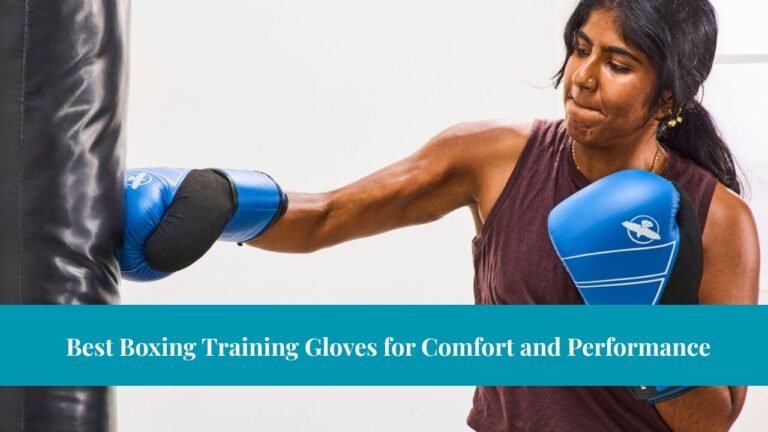If you’re serious about boxing, your training environment matters just as much as your gloves or technique. One of the most overlooked yet critical aspects of a boxer’s space is the boxing mat, the foundation beneath every punch, pivot, and foot shuffle.
Whether you’re setting up a home gym or upgrading a commercial training facility, choosing the right boxing mat is essential. It improves safety, enhances performance, and provides a durable, easy-to-maintain surface for daily training. In this comprehensive guide, we’ll break down everything you need to know from types of boxing mats to expert buying tips and real-world recommendations based on top competitors like AK Athletics, Amazon listings, and more.
What Is a Boxing Mat?
A boxing mat is a specially engineered flooring surface designed to absorb impact, reduce injury, and support dynamic movement during boxing, MMA, or combat sports training. Unlike standard gym flooring, boxing mats offer high-density support, anti-slip textures, and protective coatings to ensure safe and effective workouts.
These mats are available in various forms including roll-out mats, interlocking foam mats, and puzzle-style mats. Each design offers unique advantages, from portability to professional-grade durability, making it important for athletes to understand which option aligns best with their training environment.
Professional athletes often stress that the mat is not just “flooring.” Instead, it is the unseen coach that allows them to push harder in training without compromising safety. The right mat acts as shock absorption for every jump, pivot, or sudden change in direction fundamental movements in boxing.
Why the Right Boxing Mat Matters
Investing in a quality boxing mat goes beyond just aesthetics or comfort. It plays a central role in both safety and performance.
A well-chosen mat reduces the likelihood of ankle sprains, knee strain, or slipping accidents. Boxing involves rapid footwork, lateral movement, and constant pivoting; a slippery or thin surface increases the risk of injury. Additionally, for home gyms, mats help control noise levels, allowing athletes to train without disturbing others in the household.
For professional gyms, the flooring creates a first impression for clients. A worn, unsafe surface reflects poorly on the facility and may discourage membership renewals. On the other hand, a clean, durable, and safe mat enhances trust and ensures athletes train confidently.
Types of Boxing Mats (And Which One Is Right for You)
Different environments and training needs require different types of boxing mats. Below are the most common options and how they fit into real-world scenarios.
Interlocking Foam Mats
These mats are made of EVA (Ethylene Vinyl Acetate) foam and are lightweight, affordable, and easy to install. Interlocking edges allow users to expand or reduce the size of the flooring as needed. While not as durable as roll-out mats, they provide moderate shock absorption, making them suitable for light training.
Use Case: Best for beginners or hobbyists setting up a small home gym where portability and cost are key factors.
Roll-Out Mats
Roll-out mats are built with high-density foam and a durable vinyl coating. They are designed for intense training environments and are commonly found in professional gyms, boxing schools, and MMA facilities. These mats provide a seamless surface, minimizing tripping hazards and maximizing durability.
Use Case: The top choice for professional athletes and gym owners who require long-lasting flooring capable of handling heavy use.
Puzzle Mats
Puzzle mats resemble interlocking foam mats but provide more flexibility in design and layout. They are often reversible, allowing gym owners to switch sides for a refreshed look. While offering moderate cushioning, they are not as robust as roll-out mats but serve well in multipurpose training areas.
Use Case: Perfect for spaces where mats need to be rearranged or moved frequently, such as temporary gyms or shared workout spaces.
What to Consider Before Buying a Boxing Mat
Choosing a boxing mat is not just about picking the thickest or most expensive option. Several practical factors determine whether a mat will meet your training goals.
Thickness and Cushioning
A mat’s thickness influences shock absorption and performance. Thin mats around half an inch may suit beginners practicing light drills, while mats one inch or more in thickness offer enhanced protection during sparring or higher-impact training. However, excessively soft mats can slow down footwork, which is a crucial element in boxing.
Material Composition
The most common materials include EVA foam for lightweight affordability, polyethylene foam for dense impact protection, and vinyl coverings for durability and easy cleaning. Professional gyms often prefer vinyl-coated roll-out mats due to their balance of hygiene, firmness, and resilience.
Surface Texture
Surface finish plays a key role in preventing slips. Anti-slip textures are ideal for fast footwork, while smooth finishes may be visually appealing but risk becoming slippery with sweat. Striking the right balance between traction and movement is vital.
Space and Layout
The size and shape of your training area should guide your choice. Interlocking or puzzle mats are excellent for variable spaces, while roll-out mats may require trimming for a custom fit. Proper measurement ensures full coverage without gaps that could cause tripping.
Cleaning and Maintenance
A hygienic training environment is essential, especially in shared gyms. Mats with antimicrobial coatings resist bacteria buildup, while waterproof surfaces simplify cleaning. Regular disinfection prevents odors and protects athletes from skin infections such as staph or ringworm.
Real-Life Insight A Gym Owner’s Perspective
Tony, a gym owner in Houston, upgraded his flooring with roll-out mats from AK Athletics. His experience shows the tangible benefits of investing in the right surface:
“Before switching, our floor was a mess, slippery, noisy, and hard on the knees. Now with 1.25-inch roll-out mats, it’s quieter, safer, and our clients love the smooth yet firm surface. Plus, we just wipe them clean at the end of the day.”
His testimony highlights how the right mat can transform not only safety and comfort but also client satisfaction. Over time, durable mats reduce replacement costs and increase professional credibility.
Where to Buy Quality Boxing Mats
Athletes and gym owners have several reliable options when purchasing boxing mats.
AK Athletics is a top U.S.-based manufacturer specializing in wrestling and boxing mats. Known for antimicrobial vinyl coatings and custom sizing, their mats are popular in professional gyms and schools.
Amazon provides a wide range of interlocking and puzzle mats suitable for budget-conscious buyers. Customer reviews and ratings offer valuable insight before making a purchase, making it a practical option for beginners.
Local Sports Stores can be an excellent choice for buyers who prefer to see mats in person. Many stores provide installation services and immediate availability, eliminating the wait time associated with online orders.
Each option caters to different needs, from affordable home setups to professional-grade gym flooring.
FAQs
Can I use a wrestling mat for boxing?
Yes. Many wrestling mats, especially those with a firm vinyl cover and high-density foam, work well for boxing. Just ensure the grip and surface texture are suitable.
Are boxing mats waterproof?
Most roll-out and vinyl-covered mats are water-resistant and easy to clean. Foam mats are often waterproof but may absorb moisture over time if not sealed properly.
How often should I clean my boxing mat?
Clean after every training session using a non-abrasive cloth and a mild disinfectant. This prevents odor buildup and bacteria growth.
Do I need professional installation?
Most interlocking and roll-out mats are DIY-friendly. However, commercial gym setups may benefit from professional installation for safety and precision.
Conclusion
A boxing mat is more than just flooring; it is the foundation of your performance, safety, and overall training experience. Whether you’re shadowboxing at home, engaging in sparring drills, or managing a professional facility, the mat beneath your feet influences every movement.
From lightweight EVA foam mats to professional roll-out surfaces, the right choice depends on training intensity, available space, and budget. Factors such as thickness, material, hygiene, and traction all play essential roles in determining the best fit.
Athletes seeking professional durability should explore custom options from AK Athletics, while beginners or budget-conscious users can find practical solutions on Amazon or local sports stores. By investing in a reliable boxing mat, you ensure a safer, more effective, and enjoyable training environment that supports long-term success.




